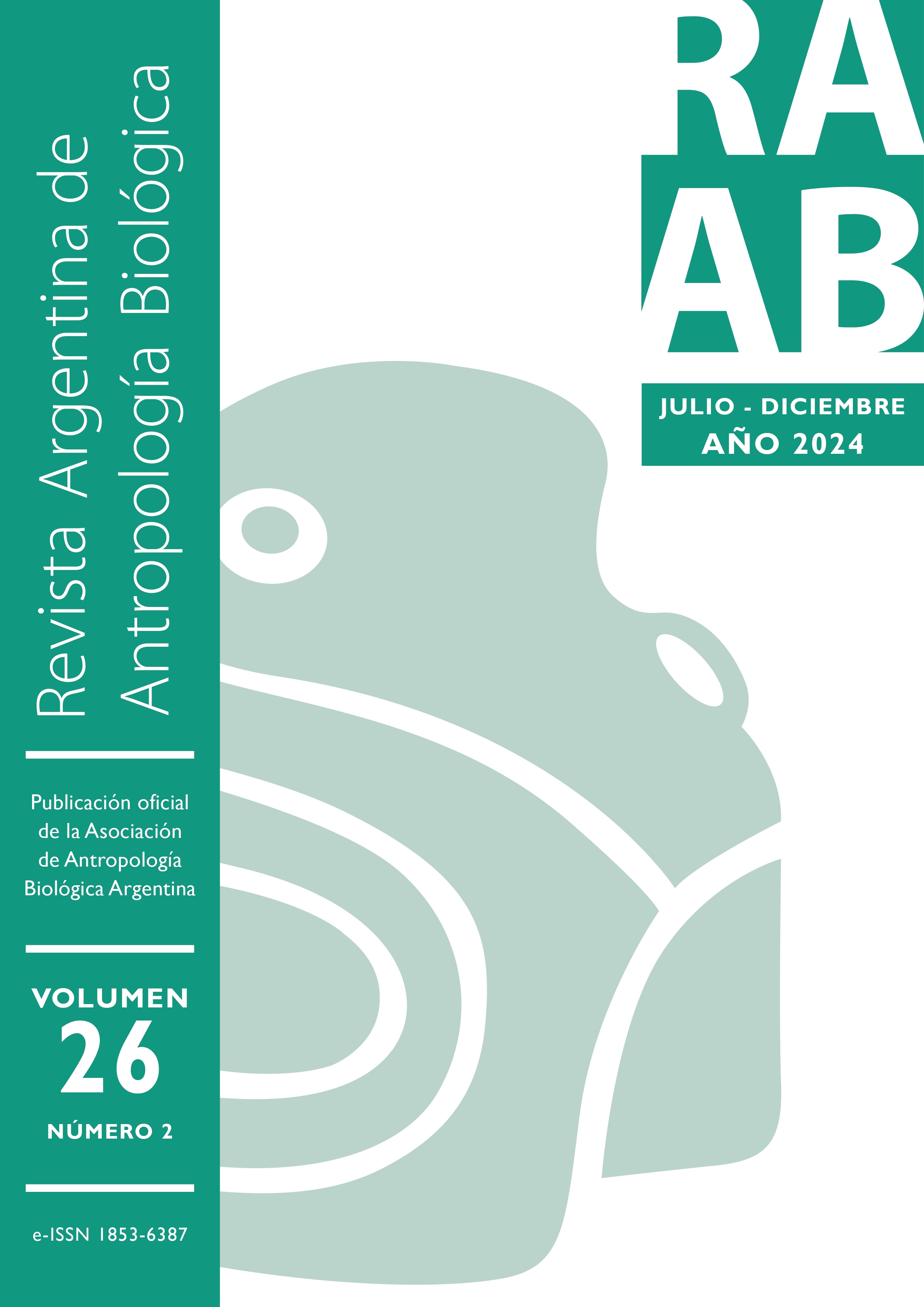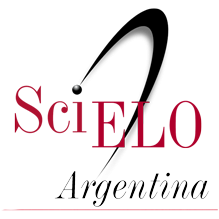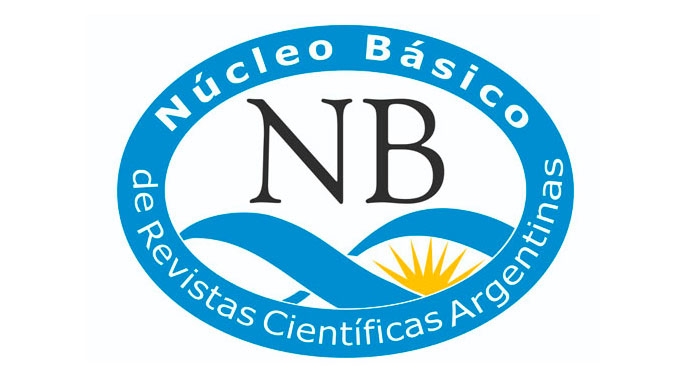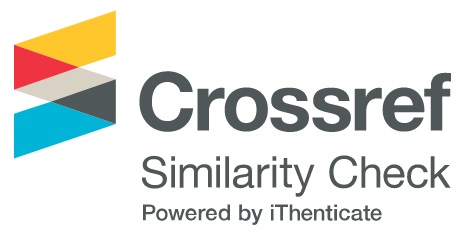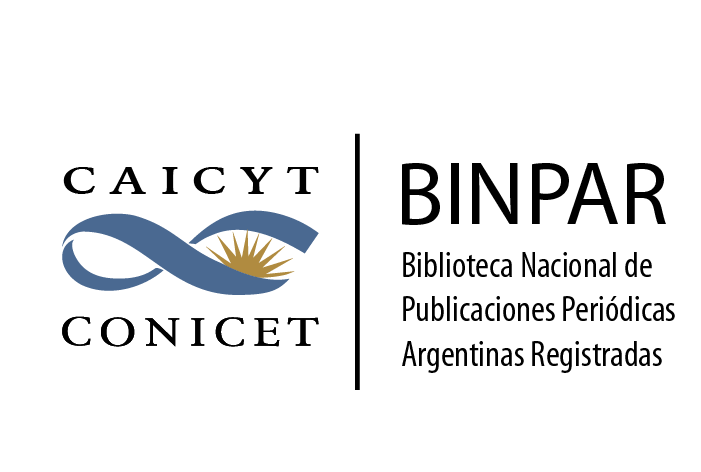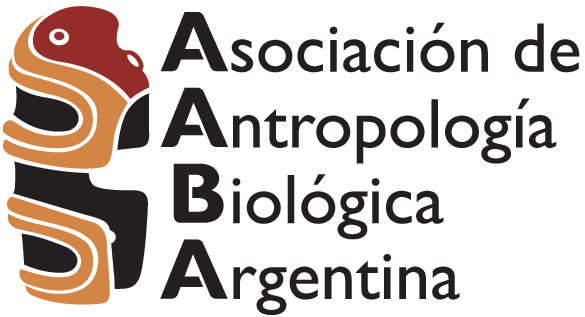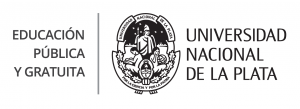La importancia de la investigación en antropología genética en Honduras, América Central
DOI:
https://doi.org/10.24215/18536387e084Palabras clave:
América Central, Honduras, genética antropológica, efecto fundador, trabajo de campoResumen
Con su ubicación geográfica única en el extremo norte del Istmo Centroamericano, Honduras se encuentra en los límites de dos regiones culturales distintas: la Mesoamericana y la Istmo-Colombiana. En este contexto, discutimos brevemente el progreso de los estudios de genética de poblaciones realizados en Honduras. El texto subraya la importancia del trabajo de campo para mejorar nuestra comprensión de la historia genética, la dinámica de las poblaciones y la aparición de enfermedades entre las comunidades indígenas de este país. Entre las siete poblaciones indígenas que actualmente se encuentran bajo investigación genética, destacamos el caso del pueblo garífuna. Exploramos sus orígenes, los patrones de migración, la diferenciación genética y la prevalencia de la Miocardiopatía Hipertrófica (MCH), posiblemente vinculada al efecto fundador. Nuestros esfuerzos de investigación en Honduras enfatizan el valor de la colaboración interdisciplinaria en el estudio de las poblaciones humanas locales, los cuales son fundamentales para comprender la evolución de los paisajes genéticos dentro de este entorno cultural y geográfico único en la región.
Descargas
Referencias
American Anthropological Association. (2012). Principles of professional responsibility. In J. Clapp (Ed.), Professional Ethics and Insignia (pp. 48-49). Scarecrow Press.
Acosta, A. (2010). Influencia del calendario Tzolkin en las actividades agrícolas y religiosas de la población Maya-Chorti de la zona occidental de Honduras. Ciencias Espaciales, 3(1), 103-124.
Alves, C., Gusmão, L., Damasceno, A., Soares, B., & Amorim, A. (2004). Contribution for an African autosomic STR database (AmpF/STR Identifiler and Powerplex 16 System) and a report on genotypic variations. Forensic Science International, 139(2-3), 201-205. https://doi.org/10.1016/j.forsciint.2003.11.002
Alves, C., Gusmão, L., López-Parra, A. M., Mesa, M. S., Amorim, A., & Arroyo-Pardo, E. (2005). STR allelic frequencies for an African population sample (Equatorial Guinea) using AmpFlSTR Identifiler and Powerplex 16 kits. Forensic Science International, 148(2-3), 239-242. https://doi.org/10.1016/j.forsciint.2004.05.007
Azofeifa, J., Ruiz, E., & Barrantes, R. (1998). Genetic variation and racial admixture in the Miskito of the southern Mosquito Shore, Nicaragua. Revista de Biología Tropical, 46(1), 157-165. https://doi.org/10.15517/rbt.v46i1.19424
Baldi, N., & Barrantes, R. (2019). History of human population genetics in Central America. In D. H. Ubelaker & S. E. Colantonio (Eds.), Biological Anthropology of Latin America historical development and recent advances (vol. 51, pp. 111-125). Smithsonian Scholarly Press.
Baldi, N. F., & Crawford, M. H. (2016). Population history and mitochondrial genetic substructure of the Rama Amerindians from Nicaragua. Human Biology, 88(2), 168-181. https://doi.org/10.13110/humanbiology.88.2.0168
Barrantes, R. (1993). Evolución en el trópico: Los amerindios de Costa Rica y Panamá. Editorial Universidad de Costa Rica.
Barrantes, R., Smouse, P. E., Neel, J. V., Mohrenweiser, H. W., & Gershowitz, H. (1982). Migration and genetic infrastructure of the Central American Guaymi and their affinities with other tribal groups. American Journal of Physical Anthropology, 58(2), 201-214. https://doi.org/10.1002/ajpa.1330580213
Beaty, K. (2017). Forced migration and population expansion: The genetic story of the Garifuna [Unpublished doctoral thesis]. University of Kansas.
Beaty, K., Herrera-Paz, E. F., Baldi, N., Bracci, N., Matamoros, M., Crawford, M. H., & Roy, R. (2017). Y STR Variation in six Garifuna villages on the Honduran coast. American Journal of Physical Anthropology, 162, 113-114. https://doi.org/10.1002/ajpa.23210
Beleza, S., Alves, C., Reis, F., Amorim, A., Carracedo, A., & Gusmão, L. (2004). 17 STR data (AmpF/STR identifiler and Powerplex 16 System) from Cabinda (Angola). Forensic Science International, 141(2-3), 193-196. https://doi.org/10.1016/j.forsciint.2004.01.008
Benn Torres, J., Martucci, V., Aldrich, M. C., Vilar, M. G., MacKinney, T., Tariq, M., Gaieski, J. B., Bharath Hernandez, R., Browne, Z. E., Stevenson, M., Walters, W., & Schurr, T. G. (2019). Analysis of biogeographic ancestry reveals complex genetic histories for indigenous communities of St. Vincent and Trinidad. American Journal of Physical Anthropology, 169(3), 482-497. https://doi.org/10.1002/ajpa.23859
Bergoeing, J. P. (2015). Geomorphological features of Honduras. In Geomorphology of Central America. A syngenetic perspective (pp. 37-49). https://doi.org/10.1016/b978-0-12-803159-9.00004-2
Budowle, B., Moretti, T. R., Baumstark, A. L., Defenbaugh, D. A., & Keys, K. M. (1999). Population data on the thirteen CODIS core short tandem repeat loci in African Americans, US Caucasians, Hispanics, Bahamians, Jamaicans, and Trinidadians. Journal of Forensic Sciences, 44(6), 1277-1286. https://doi.org/10.1520/JFS14601J
Camacho, M. V., Benito, C., & Figueiras, A. M. (2007). Allelic frequencies of the 15 STR loci included in the AmpFlSTR® IdentifilerTM PCR Amplification Kit in an autochthonous sample from Spain. Forensic Science International, 173(2), 241-245. https://doi.org/10.1016/j.forsciint.2007.02.006
Campbell, L., & Oltrogge, D. (1980). Proto-Tol (Jicaque). International Journal of American Linguistics, 46(3), 205-223. https://doi.org/10.1086/465655
Cano, Á., Stauffer, F. W., Andermann, T., Liberal, I. M., Zizka, A., Bacon, C. D., Lorenzi, H., Christe, C., Töpel, M., Perret, M., & Antonelli, A. (2022). Recent and local diversification of Central American understory palms. Global Ecology and Biogeography, 31(8), 1513-1525. https://doi.org/10.1111/geb.13521
Capodiferro, M. R., Aram, B., Raveane, A., Rambaldi Migliore, N., Colombo, G., Ongaro, L., Rivera, J., Mendizábal, T., Hernández-Mora, I., Tribaldos, M., Perego, U. A., Li, H., Scheib, C. L., Modi, A., Gòmez-Carballa, A., Grugni, V., Lombardo, G., Hellenthal, G., Pascale, J. M., … Achilli, A. (2021). Archaeogenomic distinctiveness of the Isthmo-Colombian area. Cell, 184(7), 1706-1723.e24. https://doi.org/10.1016/j.cell.2021.02.040
Chapman, A. M. (2007). Los hijos de la muerte: El universo mítico de los Tolupan-Jicaques (Honduras). (2° ed.). Instituto Hondureño de Antropología e Historia.
Constenla Umaña, A. (1989). Subagrupación de las lenguas chibchas: Algunos nuevos indicios. Estudios de Lingüística Chibcha, 8, 17-72.
Constenla Umaña, A. (1991). Las lenguas del área intermedia: Introducción a su estudio areal. Editorial Universidad de Costa Rica.
Constenla Umaña, A. (1993). La familia chibcha. Estado actual de la clasificación de las lenguas indígenas de Colombia. In M. L. Rodríguez de Montes (Ed.), Ponencias presentadas en el seminario taller realizado en el Instituto Caro y Cuervo, febrero 10, 11 y 12 de 1988 (pp. 75-125). Instituto Caro y Cuervo.
Constenla Umaña, A. (2002). Acerca de la relación genealógica de las lenguas lencas y las lenguas misumalpas. Revista de Filología y Lingüística de La Universidad de Costa Rica, 28(1), 189-205. https://doi.org/10.15517/rfl.v28i1.4509
Constenla Umaña, A. (2005). ¿Existe relación genealógica entre las lenguas misumalpas y las chibchenses? Estudios de Lingüística Chibcha, 24, 7-86.
Conzemius, E. (1929). Notes on the Miskito and Sumu languages of eastern Nicaragua and Honduras. International Journal of American Linguistics, 5(1), 57-115. https://doi.org/10.1086/463773
Cooke, R. (2021). Origin, dispersal, and survival of indigenous societies in the Central America landbridge zone of the Isthmo-Colombian Area. In C. McEwan & J. W. Hoopes (Eds.), Pre-Columbian Central America, Colombia, and Ecuador: Toward an integrated approach (pp. 49-83). Harvard University Press.
Cox, M. P., Hudjashov, G., Sim, A., Savina, O., Karafet, T. M., Sudoyo, H., & Lansing, J. S. (2016). Small traditional human communities sustain genomic diversity over microgeographic scales despite linguistic isolation. Molecular Biology and Evolution, 33(9), 2273-2284. https://doi.org/10.1093/molbev/msw099
Crawford, M. H. (1983). Current developments in Anthropological Genetics: Volume 3. Black Caribs. A case study in Biocultural adaptation. Plenum.
Crawford, M. H. (1983). The anthropological genetics of the Black Caribs “Garifuna” of Central America and the Caribbean. American Journal of Physical Anthropology, 26(S1), 161-192. https://doi.org/10.1002/ajpa.1330260508
Crawford, M. H. (2006). Anthropological Genetics: Theory, methods and applications. Cambridge University Press. https://doi.org/10.1017/CBO9781139167222
Crawford, M. H. (2024). In search of human evolution: Field research in diverse environments. Oxford University Press.
Crawford, M. H., Gonzalez, N. L., Schanfield, M. S., Dykes, D. D., Skradski, K., & Polesky, H. F. (1981). The Black Caribs (Garifuna) of Livingston, Guatemala: Genetic markers and admixture estimates. Human Biology, 53(1), 87-103. http://www.jstor.org/stable/41464596
D´Aloja, A. (1939). Informe sobre la investigación Antropológica-Demográfica realizada en Centroamérica. Publicación 39. Instituto Panamericano de Antropología e Historia.
Davidson, W. V. (2011). Censo étnico de Honduras, 2001, cuadros y mapas basados en el censo nacional. Academia Hondureña de Antropología e Historia.
Daya, M., Rafaels, N., Brunetti, T. M., Chavan, S., Levin, A. M., Shetty, A., Gignoux, C. R., Boorgula, M. P., Wojcik, G., Campbell, M., Vergara, C., Torgerson, D. G., Ortega, V. E., Doumatey, A., Johnston, H. R., Acevedo, N., Araujo, M. I., Avila, P. C., Belbin, G., … Yazdanbakhsh, M. (2019). Association study in African-admixed populations across the Americas recapitulates asthma risk loci in non-African populations. Nature Communications, 10(1), 880. https://doi.org/10.1038/s41467-019-08469-7
De Andrade Coelho, R. G. (1993). Los Negros Caribes de Honduras. (2° ed.). Editorial Guaymuras.
Dennis, P. A. (1985). Grisi Siknis in Miskito Culture. In R. C. Simons & C. C. Hughes (Eds.), The Culture-Bound syndromes. Culture, illness, and healing (vol. 7, pp. 289-306). Springer. https://doi.org/10.1007/978-94-009-5251-5_27
Eiserhardt, W. L., Couvreur, T. L. P., & Baker, W. J. (2017). Plant phylogeny as a window on the evolution of hyperdiversity in the tropical rainforest biome. New Phytologist, 214(4), 1408-1422. https://doi.org/10.1111/nph.14516
Elhaik, E., Greenspan, E., Staats, S., Krahn, T., Tyler-Smith, C., Xue, Y., Tofanelli, S., Francalacci, P., Cucca, F., Pagani, L., Jin, L., Li, H., Schurr, T. G., Greenspan, B., Spencer Wells, R., Acosta, O., Adhikarla, S., Adler, C. J., Balanovska, E., … Ziegle, J. S. (2013). The GenoChip: A new tool for genetic anthropology. Genome Biology and Evolution, 5(5), 1021-1031. https://doi.org/10.1093/gbe/evt066
Fortes-Lima, C., & Verdu, P. (2021). Anthropological genetics perspectives on the transatlantic slave trade. Human Molecular Genetics, 30(R1), R79-R87. https://doi.org/10.1093/hmg/ddaa271
Gandhi, A. D., Pettifor, A., Barrington, C., Marshall, S. W., Behets, F., Guardado, M. E., Farach N., Ardón E., & Paz-Bailey, G. (2015). Migration, multiple sexual partnerships, and sexual concurrency in the Garífuna population of Honduras. AIDS and Behavior, 19, 1559-1570. https://doi.org/10.1007/s10461-015-1139-2
Glavaški, M., Velicki, L., & Vučinić, N. (2023). Hypertrophic Cardiomyopathy: Genetic foundations, outcomes, interconnections, and their modifiers. Medicina, 59(8), 1424. https://doi.org/10.3390/medicina59081424
Gobierno de Honduras. (2015). Política pública contra el racismo y la discriminación racial para el desarrollo integral de los pueblos indígenas y afrohondureños. Secretaría de Desarrollo e Inclusión Social. https://repositorio-hepes.sedesol.gob.hn/handle/123456789/31
Gonçalves, R., Jesus, J., Fernandes, A. T., & Brehm, A. (2002). Genetic profile of a multi-ethnic population from Guiné-Bissau (west African coast) using the new PowerPlex® 16 System kit. Forensic Science International, 129(1), 78-80. https://doi.org/10.1016/S0379-0738(02)00204-9
González-Andrade, F., Sánchez-Q, D., & Martínez-Jarreta, B. (2006). Genetic analysis of the Amerindian Kichwas and Afroamerican descendents populations from Ecuador characterised by 15 STRPCR polymorphisms. Forensic Science International, 160(2-3), 231-235. https://doi.org/10.1016/j.forsciint.2005.08.002
Greenberg, J. H., & Swadesh, M. (1953). Jicaque as a Hokan language. International Journal of American Linguistics, 19(3), 216-222. https://doi.org/10.1086/464222
Guillemin, M., Gillam, L., Rosenthal, D., & Bolitho, A. (2018). Human research ethics committees: Examining their roles and practices. Journal of Empirical Research on Human Research Ethics, 13(3), 301-310. https://doi.org/10.1525/jer.2012.7.3.38
Hall, C., & Brignoli, H. P. (2003). Historical atlas of Central America. University of Oklahoma Press.
Hasseman, G., Lara Pinto, G., & Cruz Sandobal, F. (2017). Los indios de Centroamérica. Sistema Editorial Universitario (SEU).
Helms, M. W. (1983). Miskito slaving and culture contact: Ethnicity and opportunity in an expanding population. Journal of Anthropological Research, 39(2), 179-197. https://doi.org/10.1086/jar.39.2.3629966
Herlihy, L. H. (2002). Miskitu identity in the Rio Platano biosphere reserve, Honduras. Indigenous Nations Studies Journal, 3(2), 3-20.
Herlihy, L. H. (2012). The mermaid & the lobster diver: Gender, sexuality, and money on the Miskito coast. University of New Mexico Press.
Herrans, A. (2000). Estado, sociedad y lenguaje: La política lingüística de Honduras. Guaymuras.
Herrera-Paz, E. F. (2013). La migración interdepartamental en Honduras. Revista Médica Hondureña, 81(1), 11-17.
Herrera-Paz, E. F. (2013). Surnames and isonymy in the Garifuna communities of the Atlantic Coast of Honduras. Revista Médica del Instituto Mexicano del Seguro Social, 51(2), 150-157.
Herrera-Paz, E. F. (2013). La genética de poblaciones y el origen de la diversidad humana. Revista Médica Hondureña, 81(1), 40-45.
Herrera-Paz, E. F. (2017). Un tesoro genético en las costas hondureñas: Biodemografía y genética de poblaciones garífunas y otros grupos étnicos de Honduras. Hondupress.
Herrera-Paz, E. F. (2019). Biodemography research and the history of Central American and northwestern South America. In D. H. Ubelaker & S. E. Colantonio (Eds.), Biological Anthropology of Latin America: Historical developments and recent advances (vol. 51, pp. 127-147). Smithsonian Scholarly Press.
Herrera-Paz, E. F., García, L. F., Aragon-Nieto, I., & Paredes, M. (2008). Allele frequencies distributions for 13 autosomal STR loci in 3 Black Carib (Garifuna) populations of the Honduran Caribbean coasts. Forensic Science International: Genetics, 3(1), e5-e10. https://doi.org/10.1016/j.fsigen.2008.02.004
Herrera-Paz, E. F., Matamoros, M., & Carracedo, Á. (2010). The Garífuna (Black Carib) people of the Atlantic coasts of Honduras: Population dynamics, structure, and phylogenetic relations inferred from genetic data, migration matrices, and isonymy. American Journal of Human Biology, 22(1), 36-44. https://doi.org/10.1002/ajhb.20922
Herrera-Paz, E. F., Scapoli, C., Mamolini, E., Sandri, M., Carrieri, A., Rodriguez-Larralde, A., & Barrai, I. (2014). Surnames in Honduras: A study of the population of Honduras through isonymy. Annals of Human Genetics, 78(3), 165-177. https://doi.org/10.1111/ahg.12057
Hoopes, J. W., & Fonseca, O. (2003). Goldwork and Chibchan identity: Endogenous change and diffuse unity in the Isthmo-Colombian area. In J. Quilter & J.W. Hoopes (Eds.), Gold and power in ancient Costa Rica, Panama, and Colombia (pp. 49-89). Dunbarton Oaks Research Library and Collection.
Houston, S. D., Chinchilla Mazariegos, O. F., & Stuart, D. (2001). The decipherment of Ancient Maya writing. University of Oklahoma Press.
Hrdlička, A. (1926). The indians of Panama. Their physical relation to the Mayas. American Journal of Physical Anthropology, 9(1), 1-15. https://doi.org/10.1002/ajpa.1330090112
Johnston, H. R., Hu, Y. J., Gao, J., O’Connor, T. D., Abecasis, G. R., Wojcik, G. L., ... & Qin, Z. S. (2017). Identifying tagging SNPs for African specific genetic variation from the African diaspora genome. Scientific Reports, 7(1), 46398. https://doi.org/10.1038/srep46398
Kennett, D. J., Lipson, M., Prufer, K. M., Mora-Marín, D., George, R. J., Rohland, N., Robinson, M., Trask, W. R., Edgar, H. H. J., Hill, E. C., Ray, E. E., Lynch, P., Moes, E., O’Donnell, L., Harper, T. K., Kate, E. J., Ramos, J., Morris, J., Gutierrez, S. M., … Reich, D. (2022). South-to-north migration preceded the advent of intensive farming in the Maya region. Nature Communications, 13(1), 1-10. https://doi.org/10.1038/s41467-022-29158-y
Kido, A., Dobashi, Y., Fujitani, N., Hara, M., Susukida, R., Kimura, H., & Oya, M. (2007). Population data on the AmpFlSTR Identifiler loci in Africans and Europeans from South Africa. Forensic Science International, 168(2-3), 232-235. https://doi.org/10.1016/j.forsciint.2006.02.040
Kistler, L., Thakar, H. B., VanDerwarker, A. M., Domic, A., Bergström, A., George, R. J., Harper, T. K., Allaby, R. G., Hirth, K., & Kennett, D. J. (2020). Archaeological Central American maize genomes suggest ancient gene flow from South America. Proceedings of the National Academy of Sciences, 117(52), 33124-33129. https://doi.org/10.1073/pnas.2015560117
Kristiansson, K., Naukkarinen, J., & Peltonen, L. (2008). Isolated populations and complex disease gene identification. Genome Biology, 9(8), 1-9. https://doi.org/10.1186/gb-2008-9-8-109
Lovo-Gómez, J., Salas, A., & Carracedo, Á. (2007). Microsatellite autosomal genotyping data in four indigenous populations from El Salvador. Forensic Science International, 170(1), 86-91. https://doi.org/10.1016/j.forsciint.2006.05.031
Maruyama, T., & Fuerst, P. A. (1985). Population bottlenecks and nonequilibrium models in population genetics. II. Number of alleles in a small population that was formed by a recent bottleneck. Genetics, 111(3), 675-689. https://doi.org/10.1093/genetics/111.3.675
Matamoros, M., Pinto, Y., Inda, F. J., & García, O. (2008). Population genetic data for 15 STR loci (Identifiler trademark kit) in Honduras. Legal Medicine, 10, 281-283.
Mathias, R. A., Taub, M. A., Gignoux, C. R., Fu, W., Musharoff, S., O’Connor, T. D., Vergara, C., Torgerson, D. G., Pino-Yanes, M., Shringarpure, S. S., Huang, L., Rafaels, N., Boorgula, M. P., Johnston, H. R., Ortega, V. E., Levin, A. M., Song, W., Torres, R., Padhukasahasram, B., … Barnes, K. C. (2016). A continuum of admixture in the Western Hemisphere revealed by the African diaspora genome. Nature Communications, 7,12522. https://doi.org/10.1038/ncomms12522
Matson, G. A., & Swanson, J. (1963). Distribution of blood groups among Indians in Middle America: IV. In Honduras. American Journal of Physical Anthropology, 21(3), 319-333. https://doi.org/10.1002/ajpa.1330210307
McSweeney, K. (2002). A demographic profile of the Tawahka Amerindians of Honduras. Geographical Review, 92(3), 398-414. https://doi.org/10.1111/j.1931-0846.2002.tb00150.x
Melton, P. E., Baldi, N. F., Barrantes, R., & Crawford, M. H. (2013). Microevolution, migration, and the population structure of five Amerindian populations from Nicaragua and Costa Rica. American Journal of Human Biology, 25(4), 480-490. https://doi.org/10.1002/ajhb.22382
Metz, B. (2016). An ambivalent nation Ch’orti’ in eastern Guatemala and western Honduras. In J. Moreno Tejada & B. Tatar (Eds.), Transnational frontiers of Asia and Latin America since 1800 (pp. 193-207). Routledge.
Mills, R. A., Hugh, K. E., Feray, D. E., & Swolfs, H. C. (1963). Mesozoic stratigraphy of Honduras. AAPG Bulletin, 47(9), 1774-1774. https://doi.org/10.1306/BC743B49-16BE-11D7-8645000102C1865D
Morales-Arce, A. Y., Hofman, C. A., Duggan, A. T., Benfer, A. K., Katzenberg, M. A., McCafferty, G., & Warinner, C. (2017). Successful reconstruction of whole mitochondrial genomes from ancient Central America and Mexico. Scientific Reports, 7(1), 18100. https://doi.org/10.1038/s41598-017-18356-0
Morales-Marroquín, J. A., Solis Miranda, R., Baldin Pinheiro, J., & Zucchi, M. I. (2022). Biodiversity research in Central America: A regional comparison in scientific production using bibliometrics and democracy indicators. Frontiers in Research Metrics and Analytics, 7, 898818. https://doi.org/10.3389/frma.2022.898818
Morera-Brenes, B. (2006). Estimación de la mezcla genética en la población de Nicaragua. Cuadernos de Antropología, 16(1), 39-46.
Nair, A. K., & Baier, L. J. (2015). Complex genetics of type 2 diabetes and effect size: What have we learned from isolated populations? Review of Diabetic Studies, 12(3-4), 299. https://doi.org/10.1900/RDS.2015.12.299
Norris, E. T., Wang, L., Conley, A. B., Rishishwar, L., Mariño-Ramírez, L., Valderrama-Aguirre, A., & Jordan, I. K. (2018). Genetic ancestry, admixture and health determinants in Latin America. BMC Genomics, 19, 75-87. https://doi.org/10.1186/s12864-018-5195-7
Offen, K. H. (2002). The Sambo and Tawira Miskitu: The colonial origins and geography of Intra-Miskitu differentiation in eastern Nicaragua and Honduras. Ethnohistory, 49(2), 319-372. https://doi.org/10.1215/00141801-49-2-319
Pardo, L. M., MacKay, I., Oostra, B., van Duijn, C. M., & Aulchenko, Y. S. (2005). The effect of genetic drift in a young genetically isolated population. Annals of Human Genetics, 69(3), 288-295. https://doi.org/10.1046/j.1529-8817.2005.00162.x
Paredes, M., Galindo, A., Bernal, M., Avila, S., Andrade, D., Vergara, C., Rincón, M., Romero, R. E., Navarrete, M., Cárdenas, M., Ortega, J., Suarez, D., Cifuentes, A., Salas, A., & Carracedo, Á. (2003). Analysis of the CODIS autosomal STR loci in four main Colombian regions. Forensic Science International, 137(1), 67-73. https://doi.org/10.1016/S0379-0738(03)00271-8
Phillips-Krawczak, C. (2012). Causes and consequences of migration to the Caribbean Islands and Central America: An evolutionary success story. In M. H. Crawford & B. C. Campbell (Eds.), Causes and consequences of human migration: An evolutionary perspective (pp. 512-523). Cambridge University Press.
Posth, C., Nakatsuka, N., Lazaridis, I., Skoglund, P., Mallick, S., Lamnidis, T. C., Rohland, N., Nägele, K., Adamski, N., Bertolini, E., Broomandkhoshbacht, N., Cooper, A., Culleton, B. J., Ferraz, T., Ferry, M., Furtwängler, A., Haak, W., Harkins, K., Harper, T. K., … Reich, D. (2018). Reconstructing the deep population history of Central and South America. Cell, 175(5), 1185-1197. https://doi.org/10.1016/j.cell.2018.10.027
Prufer, K. M., Alsgaard, A. V., Robinson, M., Meredith, C. R., Culleton, B. J., Dennehy, T., Magee, S., Huckell, B. B., James Stemp, W., Awe, J. J., Capriles, J. M., & Kennett, D. J. (2019). Linking late Paleoindian stone tool technologies and populations in North, Central and South America. PLOS One, 14(7), e0219812. https://doi.org/10.1371/journal.pone.0219812
Pullman, D., & Nicholas, G. P. (2011). Intellectual property and the ethical/legal status of human DNA: The (ir) relevance of context. Études/Inuit/Studies, 35(1), 143-164. https://doi.org/10.7202/1012839ar
Redo, D., Joby Bass, J. O., & Millington, A. C. (2009). Forest dynamics and the importance of place in western Honduras. Applied Geography, 29(1), 91-110. https://doi.org/10.1016/j.apgeog.2008.07.007
Richard, A., Mills, K. E., & Hugh, D. E. (1963). Mesozoic Stratigraphy of Honduras: ABSTRACT. AAPG Bulletin, 47(9), 1774. https://doi.org/10.1306/bc743b49-16be-11d7-8645000102c1865d
Rodríguez, A., Arrieta, G., Sanóu, I., Vargas, M. C., García, O., Yurrebaso, I., Pérez, J. A., Villalta, M., & Espinoza, M. (2007). Population genetic data for 18 STR loci in Costa Rica. Forensic Science International, 168(1), 85-88. https://doi.org/10.1016/j.forsciint.2006.01.013
Rosenswig, R. M., Pearsall, D. M., Masson, M. A., Culleton, B. J., & Kennett, D. J. (2014). Archaic period settlement and subsistence in the Maya lowlands: New starch grain and lithic data from Freshwater Creek, Belize. Journal of Archaeological Science, 41, 308-321. https://doi.org/10.1016/j.jas.2013.07.034
Salamanca, D. (2007). El trabajo de los lingüistas en CIDCA y WANI. Wani, 51, 39-52.
Salas, A., Richards, M., Lareu, M. V., Sobrino, B., Silva, S., Matamoros, M., Macaulay, V., & Carracedo, A. (2005). Shipwrecks and founder effects: Divergent demographic histories reflected in Caribbean mtDNA. American Journal of Physical Anthropology, 128(4), 855-860. https://doi.org/10.1002/ajpa.20117
Santos-Fernández, W. J., Jones-Turcios, G. S., Ávila-Valle, G. L., Portillo-Canales, S., Orellana-Áragon, E., Mayorga, & Herrera-Paz, E. F. (2016). Comparison of the prevalence of bronchial asthma in school-aged children and adolescents on Roatán Island and in other coastal communities in Honduras. Revista Médica del Hospital General de México, 79(3), 124-135. https://doi.org/10.1016/j.hgmx.2016.05.020
Satam, H., Joshi, K., Mangrolia, U., Waghoo, S., Zaidi, G., Rawool, S., Thakare, R. P., Banday, S., Mishra, A. K., Das, G., & Malonia, S. K. (2023). Next-generation sequencing technology: Current trends and advancements. Biology, 12(7), 997. https://doi.org/10.3390/biology12070997
Schultz, A. H. (1926). Anthropological studies on Nicaraguan indians. American Journal of Physical Anthropology, 9(1), 65-80. https://doi.org/10.1002/ajpa.1330090114
Sheffield, V. C., Stone, E. M., & Carmi, R. (1998). Use of isolated inbred human populations for identification of disease genes. Trends in Genetics, 14(10), 391-396. https://doi.org/10.1016/S0168-9525(98)01556-X
Sherman, R. M., Forman, J., Antonescu, V., Puiu, D., Daya, M., Rafaels, N., Boorgula, M. P., Chavan, S., Vergara, C., Ortega, V. E., Levin, A. M., Eng, C., Yazdanbakhsh, M., Wilson, J. G., Marrugo, J., Lange, L. A., Williams, L. K., Watson, H., Ware, L. B., … Salzberg, S. L. (2019). Assembly of a pan-genome from deep sequencing of 910 humans of African descent. Nature Genetics, 51(1), 30-35. https://doi.org/10.1038/s41588-018-0273-y
Suárez, Á. G. (2002). Nuevos discursos ideológicos: La movilización indígena del pueblo Tawahka de la selva de la Mosquitia. Revista Mexicana del Caribe, 7(13), 65–197.
Thompson, E. A., Neel, J. V., Smouse, P. E., & Barrantes, R. (1992). Microevolution of the Chibcha-speaking peoples of lower Central America: Rare genes in an Amerindian complex. American Journal of Human Genetics, 51(3), 609.
U.S. Department of Health and Human Services. (1979). Protection of human subjects. Belmont Report: Notice of report for public comment. Federal Register, 44, 23191-23197.
Valle, E. E., Meza, D. E., Tabora, J. L., Elvir, M. L., Muñóz, D. S., Castellanos, H. J., & Herrera-Paz, E. F. (2018). Aportes al inventario y caracterización de las plantas medicinales del pueblo originario Lenca de Intibucá, Honduras. Cuadernos de Antropología, 28(1), 1-19. https://doi.org/10.15517/cat.v28i1.32383
Vargas Aguilar, J. C. (2006). Etno-demografía de la étnia Pech, Honduras. Población y Salud en Mesoamérica, 3(2), 5.
Williams, R. J. (2014). Background report on the Garifuna of Honduras. Innovation for Agricultural Training and Education.
World Medical Association. (2013). World Medical Association declaration of Helsinki: Ethical principles for medical research involving human subjects. Jama, 310(20), 2191-2194. https://doi.org/10.1001/jama.2013.281053
Descargas
Publicado
Número
Sección
Licencia
Derechos de autor 2024 Norberto F. Baldi, Edwin F. Herrera PazLa RAAB es una revista de acceso abierto tipo diamante. No se aplican cargos para la lectura, el envío de los trabajos ni tampoco para su procesamiento. Asímismo, los autores mantienen el copyright sobre sus trabajos así como también los derechos de publicación sin restricciones.

